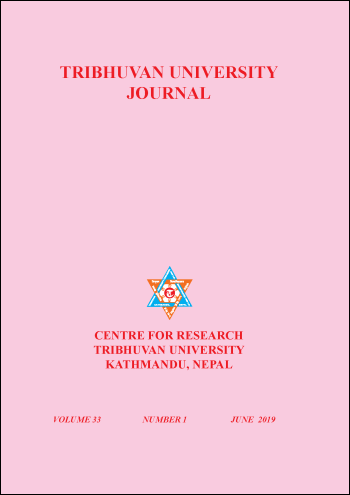Nepali Text Document Classification Using Deep Neural Network
DOI:
https://doi.org/10.3126/tuj.v33i1.28677Keywords:
Neural Network, Text Classification, Bag of words, Deep Learning, Machine LearningAbstract
An automated text classification is a well-studied problem in text mining which generally demands the automatic assignment of a label or class to a particular text documents on the basis of its content. To design a computer program that learns the model form training data to assign the specific label to unseen text document, many researchers has applied deep learning technologies. For Nepali language, this is first attempt to use deep learning especially Recurrent Neural Network (RNN) and compare its performance to traditional Multilayer Neural Network (MNN). In this study, the Nepali texts were collected from online News portals and their pre-processing and vectorization was done. Finally deep learning classification framework was designed and experimented for ten experiments: five for Recurrent Neural Network and five for Multilayer Neural Network. On comparing the result of the MNN and RNN, it can be concluded that RNN outperformed the MNN as the highest accuracy achieved by MNN is 48 % and highest accuracy achieved by RNN is 63%.
Downloads
Downloads
Published
How to Cite
Issue
Section
License
This license enables reusers to distribute, remix, adapt, and build upon the material in any medium or format for noncommercial purposes only, and only so long as attribution is given to the creator.
© Center for Research, Tribhuvan University

